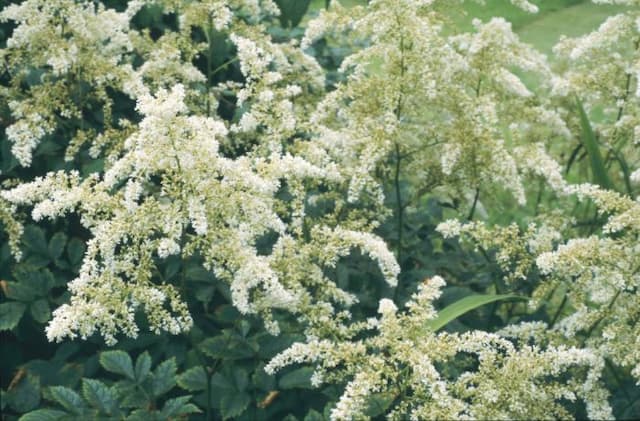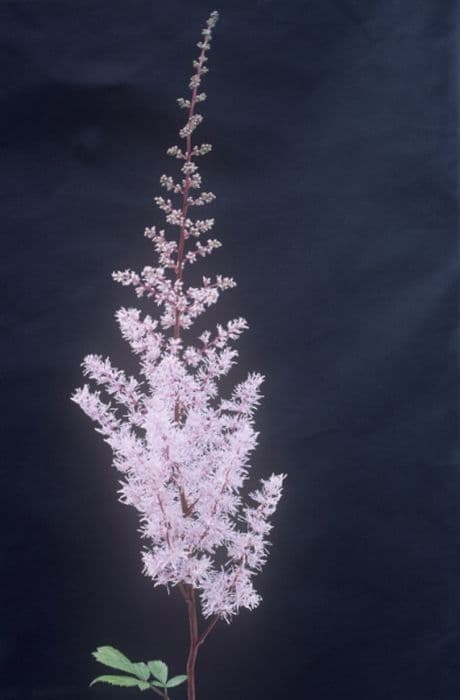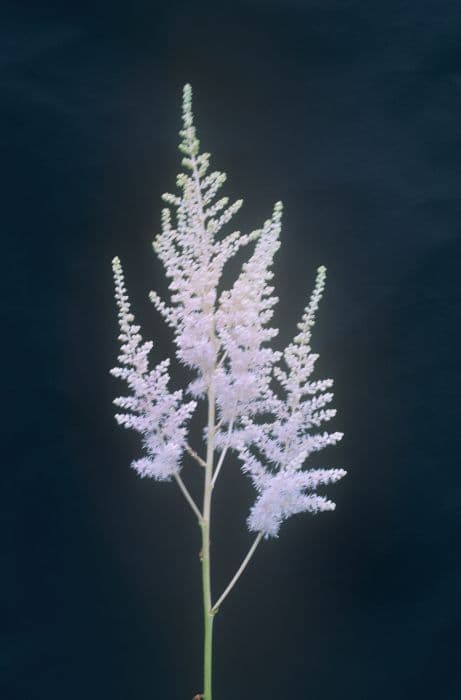Alum root 'Cherry Cola' Heuchera 'Cherry Cola' (PBR)

ABOUT
'Cherry Cola' displays gently-lobed leaves forming a low mound in a red-brown tones, with taller stems of cherry-red to salmon bell flowers appearing in late spring and early summer
About this plant
 Names
NamesFamily
Saxifragaceae.
Synonyms
Cherry Cola Coral Bells, Alumroot.
Common names
Heuchera 'Cherry Cola' (PBR)
 Characteristics
CharacteristicsLife cycle
Perennials
Foliage type
Semi-evergreen
Color of leaves
Mixed
Flower color
Red
Height
1 foot (30 cm)
Spread
1 foot (30 cm)
Plant type
Herb
Hardiness zones
4
Native area
North America
Benefits
 General Benefits
General Benefits- Drought tolerant - Heuchera 'Cherry Cola' can survive periods of low water availability once established, making it suitable for xeriscaping.
- Low maintenance - This coral bells variety requires minimal care, with only occasional deadheading and division needed.
- Aesthetic appeal - Offers vibrant reddish-brown foliage and cherry red flowers that add a splash of color to gardens and landscapes.
- Attracts pollinators - The blossoms of 'Cherry Cola' attract hummingbirds and butterflies, enhancing the biodiversity of the garden.
- Versatile - Can be used in a variety of settings, including borders, containers, and as ground cover, offering flexible design options.
- Shade tolerant - While it can grow in full sun to partial shade, it is particularly suited for shaded areas where other plants may struggle.
- Compact size - Its small stature makes it ideal for gardens with limited space or for use in mixed plantings without overpowering neighboring plants.
- Seasonal interest - Provides year-round interest with its evergreen foliage in mild climates and seasonal changes in leaf color.
- Deer resistant - Less preferred by deer, which helps prevent damage to the plant and maintains its aesthetic.
- Soil adaptability - Adapts to a wide range of soil conditions, although it prefers well-draining soils.
 Medical Properties
Medical PropertiesThis plant is not used for medical purposes.
 Air-purifying Qualities
Air-purifying QualitiesThis plant is not specifically known for air purifying qualities.
 Other Uses
Other Uses- Photography: Heuchera 'Cherry Cola' provides a vibrant contrast in color for macro photography enthusiasts who like to capture the intricate details of plants.
- Artistic inspiration: The rich shades of red and brown in the foliage can inspire artists for color palettes in paintings or textile designs.
- Educational tool: This plant can be used to teach children about perennial life cycles and the importance of plant diversity in garden ecosystems.
- Seasonal decorations: Dried leaves of Heuchera 'Cherry Cola' can be incorporated into fall wreaths or table centerpieces for a natural touch.
- Culinary presentation: The attractive leaves can be used as a decorative garnish on plates in high-end culinary presentations, though they are not edible.
- Crafting: Leaves can be pressed and used in scrapbooking or card making for their unique color and texture.
- Theme gardens: The plant can be included in “soda” or “beverage” themed gardens due to its name 'Cherry Cola'.
- Container Gardening: Heuchera 'Cherry Cola' can be used in small container gardens to add texture and color without the need for large planting spaces.
- Colorful mulch: When the leaves fall, they can contribute to a visually appealing, natural mulch, adding color to the garden floor.
- Fantasy gardens: Because of its whimsical name and color, the plant can be used to create a fairy-tale or fantasy-themed garden area, especially attractive to children.
Interesting Facts
 Feng Shui
Feng ShuiThe Coral Bells is not used in Feng Shui practice.
 Zodiac Sign Compitability
Zodiac Sign CompitabilityThe Coral Bells is not used in astrology practice.
 Plant Symbolism
Plant Symbolism- Eternal beauty: Heuchera, commonly known as Coral Bells, often symbolizes eternal beauty due to its visually striking foliage that maintains its appeal across seasons.
- Variety and Versatility: The 'Cherry Cola' variety, with its unique reddish-bronze leaves, represents the plant’s wide range of colors and forms, showcasing nature’s versatility.
- Attraction: As Coral Bells attract hummingbirds and butterflies, they are associated with attraction and creating positive environments for different forms of life.
- Balance: Heuchera's ability to thrive in both sun and shade is emblematic of balance, embodying the plant's adaptability to diverse conditions.
 Water
WaterCoral Bells should be watered deeply once a week, allowing soil to dry slightly between waterings. Use about one gallon of water per plant each week, adjusting for rainfall and heat. Overhead watering can promote fungal diseases, so water at the base of the plant to keep the foliage dry. During hotter, drier spells, additional watering may be necessary, but beware of overwatering as Coral Bells do not like soggy soil.
 Light
LightCoral Bells prefer partial shade, but can tolerate morning sun with afternoon shade. Avoid placing them in full afternoon sun, as this can scorch their leaves. They thrive in dappled sunlight under tree canopies or on the north or east side of buildings.
 Temperature
TemperatureCoral Bells are cold-hardy and can survive in temperatures as low as -25°F, making them suitable for USDA hardiness zones 4 through 9. They prefer temperatures between 60°F and 70°F but will tolerate summer highs up to 80°F if adequately shaded and hydrated.
 Pruning
PruningCoral Bells should be pruned to remove any dead or damaged leaves and to promote bushier growth. Pruning is best done in early spring before new growth starts or immediately after flowering. They can also be lightly trimmed throughout the summer to maintain shape.
 Cleaning
CleaningAs needed
 Soil
SoilCoral Bells thrive in a well-draining soil mix composed of loam, organic compost, and coarse sand. Aim for a slightly acidic to neutral pH, between 6.0 and 7.0, to allow the 'Cherry Cola' variety to flourish with its vibrant foliage.
 Repotting
RepottingCoral Bells generally require repotting every 3-4 years or when the root system outgrows the current container. It's best to repot in the spring, allowing the plant to establish in the new pot before the growing season.
 Humidity & Misting
Humidity & MistingCoral Bells prefer average to slightly above average humidity levels. They can tolerate a range from 50% to 70%, which is common in many indoor environments without the need for additional humidity control.
 Suitable locations
Suitable locationsIndoor
Place 'Cherry Cola' Coral Bells in bright, indirect light; water when topsoil dries.
Outdoor
Plant in partial shade, mulch well, protect from hot afternoon sun.
Hardiness zone
4-9 USDA
 Life cycle
Life cycleCoral Bells 'Cherry Cola' begins its life cycle when seeds germinate in spring or early summer after the danger of frost has passed. Seedlings will then develop into rosettes of reddish-bronze leaves, which will mature and grow primarily during the cooler months. In its first or second year, depending on growing conditions, the plant will send up slender flower stalks bearing small, bell-shaped flowers that attract pollinators. Once pollinated, these flowers will set seed that can disperse to propagate new plants. After flowering, particularly in colder climates, Coral Bells 'Cherry Cola' will become dormant during the winter, though the leaves may persist if the climate is mild. Perennial in nature, the plant will re-emerge from dormancy in spring to repeat its life cycle.
 Propogation
PropogationPropogation time
Spring-Early Summer
Heuchera 'Cherry Cola', commonly known as Coral Bells, is a perennial plant that is often propagated through division, which is the most popular method. This involves carefully separating the plant into smaller sections, ensuring that each has a piece of the root system. The best time to divide Coral Bells is either in the early spring or in the fall, when the plant is not in active growth. To propagate by division, gently dig up the entire plant, making sure not to damage the roots, and use a sharp knife or spade to divide the root ball into smaller clumps. Each clump should have several leaves and a good portion of the root system attached. The divisions can then be replanted into well-draining soil at the same depth they were growing before and watered thoroughly. This method is simple and usually results in healthy new plants that will start growing immediately and can fill out their new space within a season.









